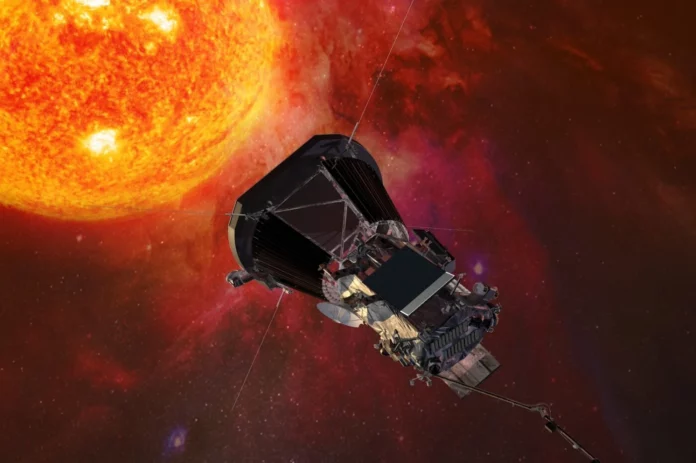The Parker Solar Probe has survived an ultra-close encounter with the Sun and re-established communication with the mission control team days after a scorching flyby.
NASA‘s solar probe transmitted a radio signal to Earth shortly before midnight on Thursday, indicating that the spacecraft is in good condition and operating normally, the space agency wrote in its blog. Parker Solar Probe went silent during its closest approach on Tuesday, an expected communications blackout that meant the mission’s operations team would not know whether or not the spacecraft had survived its daring Christmas Eve feat.
Now the team can rest easy knowing that the most difficult task of the mission has been completed successfully. During its closest approach, the Parker Solar Probe came within just 3.8 million miles (6.1 million kilometers) of the Sun’s surface. At this distance, the probe broke its own record for closest approach to the Sun for a spacecraft. By comparison, Earth is 93 million miles (149 million kilometers) away from our star – almost 25 times farther from the Sun than Parker was on Tuesday.
During the closest approach, the spacecraft was traveling at a record speed of 430,000 miles per hour (692,000 kilometers per hour), making it the fastest human-made object to ever travel. During its closest approach to the burning ball of plasma, the probe withstood temperatures of about 1800 degrees Fahrenheit (982.2 degrees Celsius). Because Parker is coming so close to the Sun, it also needs an extremely thick heat shield to withstand the scorching temperatures.
The mission is expected to send back detailed telemetry data on its status on January 1, 2025, according to NASA. “This up-close study of the Sun allows Parker Solar Probe to make measurements that help scientists better understand how material in this region heats up to millions of degrees, trace the origin of the solar wind (a continuous stream of material coming from the Sun), and reveal how energetic particles accelerate to near the speed of light,” NASA wrote in its blog. “Previous close flybys have helped scientists pinpoint the origin of structures in the solar wind and map the outer boundary of the Sun’s atmosphere.”
The Parker Solar Probe was launched in August 2018 with a mission to touch the Sun. Prior to Tuesday’s record-breaking encounter with the star, the spacecraft had made 21 close encounters with the Sun, coming within 4.51 million miles (7.26 million km) of it. With each approach, the solar probe came a few centimeters closer to the surface of the Sun. In November, the Parker Solar Probe made its seventh and final flyby of Venus, preparing it for the closest approach.
This week’s flyby is the first of three close encounters with the Sun at the same distance. Each close approach provides the mission with valuable data about our star that can shed light on the complex physics of our star and how its dynamic phenomena – from explosive eruptions to wind – affect the rest of the solar system.









